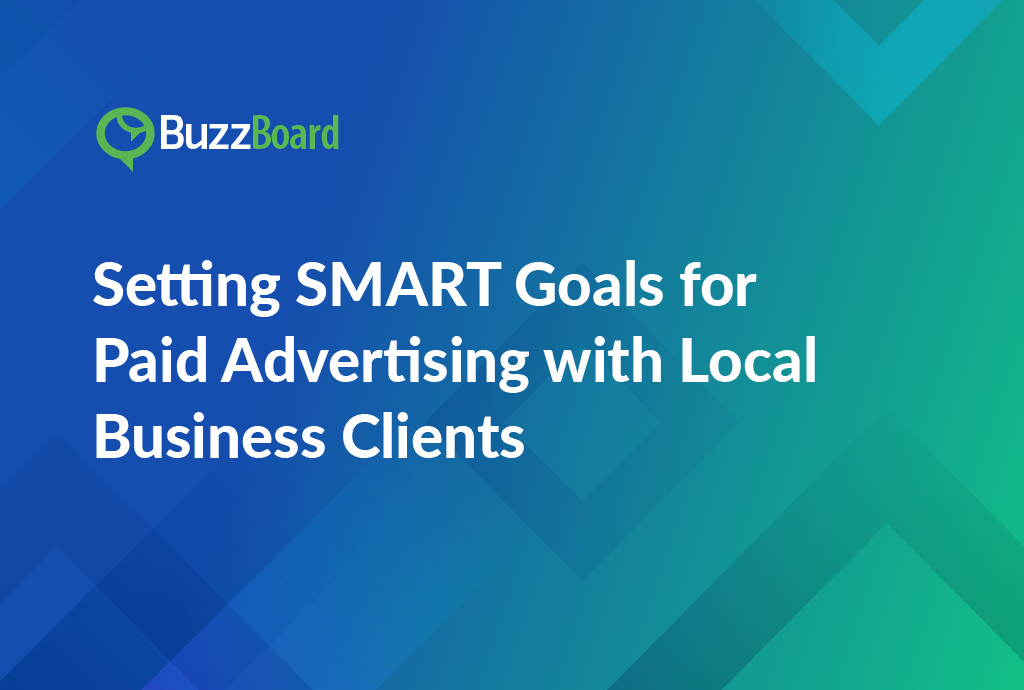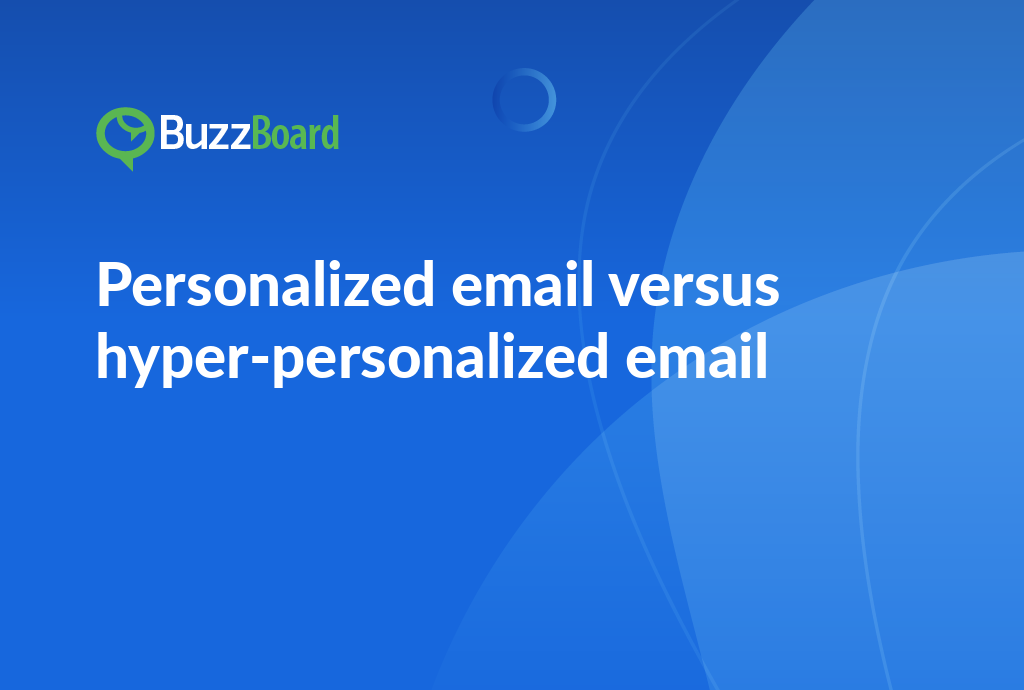How to Set Smart Goals for Paid Advertising with Local Business Clients: A Step-by-Step Guide
Setting smart goals for paid advertising campaigns is crucial for local businesses to measure success and optimize their ad spend. In this article, we’ll walk you through a step-by-step process to help you set effective goals with your local business clients. Learn how to identify key performance indicators (KPIs), establish measurable targets, and track progress to maximize your ad campaigns’ ROI.
Introduction to Paid Advertising and Its Significance for Local Business Clients
Paid advertising holds great promise for local businesses, rapidly emerging as a powerful aspect of digital marketing. Leveraging this advertising approach can significantly drive local business growth, presenting a practical avenue to promote products and services.
A deep understanding of paid advertising requires insight into SMART goals, a critical part of strategic planning. SMART—which stands for Specific, Measurable, Achievable, Relevant, and Time-bound—helps fine-tune advertising strategies, optimizing them for business success.
Intentional goal-setting is a crucial factor in the success of local businesses, and it’s essential to understand how to effectively utilize various marketing strategies to achieve these goals. Let’s take a local bookstore as an example. Suppose the owner sets a SMART goal to increase its customer base by 20% within the next three months. To achieve this objective, the bookstore could implement customized paid advertising campaigns that are specifically designed to amplify its visibility and attract more customers.
One effective approach would be to deploy targeted social media advertising campaigns that cater to local readers. This could involve creating ads that are tailored to the interests and preferences of the target audience, such as book clubs, authors, or readers with specific tastes. By leveraging social media platforms like Facebook, Instagram, and Twitter, the bookstore can reach a large and engaged audience, increasing the likelihood of driving foot traffic to the store.
Paid advertising is a vital tool for business growth and success, especially for local establishments. By understanding the many layers of paid advertising, salespeople in digital marketing can help their clients achieve remarkable results. Here are some key benefits of using paid advertising for local businesses:
- Increased visibility: Paid advertising can help local businesses increase their online visibility, making it more likely for customers to discover them.
- Targeted reach: By targeting specific demographics, interests, and behaviors, local businesses can ensure that their ads are seen by the right people at the right time.
- Measurable results: Paid advertising provides measurable results, allowing businesses to track the effectiveness of their campaigns and make data-driven decisions.
- Cost-effective: Paid advertising can be a cost-effective way to reach a large audience, especially when compared to traditional forms of advertising.
- Flexibility: Paid advertising campaigns can be easily adjusted and optimized in real-time, allowing businesses to quickly respond to changes in the market or consumer behavior.
To get the most out of paid advertising, local businesses should focus on the following strategies:
- Define clear goals: Establishing clear goals and objectives is essential for any paid advertising campaign. This will help businesses determine what they want to achieve and measure the success of their campaigns.
- Identify the target audience: Understanding the target audience is critical for creating effective paid advertising campaigns. Businesses should identify the demographics, interests, and behaviors of their ideal customer and tailor their ads accordingly.
- Choose the right platforms: Not all paid advertising platforms are created equal. Businesses should choose the platforms that are most relevant to their target audience and goals.
- Create compelling ad copy: Ad copy is a critical component of any paid advertising campaign. Businesses should create ad copy that is attention-grabbing, relevant, and compelling.
- Monitor and optimize: Paid advertising campaigns should be continuously monitored and optimized to ensure that they are achieving the desired results. Businesses should track their metrics, make adjustments as needed, and be willing to pivot if a campaign is not performing as expected.
By following these strategies and leveraging the power of paid advertising, local businesses can increase their visibility, drive more traffic to their stores, and ultimately achieve their goals.
Understanding the Concept of Smart Goals Within the Context of Digital Marketing
The success of paid advertising campaigns in digital marketing, particularly when working with local business clients, hinges on the establishment of Specific, Measurable, Achievable, Relevant, and Time-bound (SMART) goals. This approach enables marketers to create targeted, effective, and measurable campaigns that drive tangible results for their clients.
To achieve this, it is essential to understand the unique needs and objectives of each local business client. By carefully considering their goals, marketers can develop advertising strategies that are tailored to their specific requirements and aligned with their overall marketing and commercial strategies. This involves identifying the key performance indicators (KPIs) that will be used to evaluate the effectiveness of the campaign, such as conversion rates, click-through rates, and return on investment (ROI).
In addition to being specific and measurable, SMART goals should also be achievable. This means setting realistic targets based on the available resources and the dynamics of the local market. For instance, a local business may not have the budget to target a large geographic area, so the goal should be adjusted accordingly. By setting achievable goals, marketers can ensure that their clients are not disappointed or discouraged by unrealistic expectations.
Furthermore, SMART goals should be relevant to the local business client’s needs and objectives. This involves understanding their target audience, their products or services, and their unique value proposition. By aligning the advertising campaign with these factors, marketers can create messaging and targeting that resonates with the client’s audience and drives meaningful engagement.
Finally, SMART goals should be time-bound, with a specific deadline or timeline for achieving the desired outcome. This provides a sense of urgency and focus for the marketing team, as well as a clear benchmark for measuring progress and success. By setting a specific timeline, marketers can also ensure that the campaign is aligned with the client’s overall marketing and commercial strategies, and that the desired results are achieved within a reasonable timeframe.
By incorporating SMART goals into paid advertising campaigns with local business clients, marketers can enhance their strategies in several ways. Firstly, SMART goals bring in higher accountability, as marketers are held responsible for achieving specific, measurable outcomes. Secondly, SMART goals provide strategic direction, as they help marketers focus on the most important objectives and allocate resources accordingly. Finally, SMART goals offer a means to track progress and measure success, allowing marketers to adjust their strategies and optimize their campaigns for better results.
The establishment of SMART goals is a critical component of successful paid advertising campaigns in digital marketing, particularly when working with local business clients. By setting specific, measurable, achievable, relevant, and time-bound goals, marketers can create targeted, effective, and measurable campaigns that drive tangible results for their clients. By incorporating SMART goals into their strategies, marketers can enhance their accountability, direction, and ability to track progress, ultimately leading to better outcomes for their clients and their own businesses.
How to Set Smart Goals for Successful Paid Advertising Campaigns
Setting SMART goals is a crucial aspect of achieving success in digital marketing, particularly for local businesses running paid advertising campaigns. By setting specific, measurable, achievable, relevant, and time-bound goals, you can increase the likelihood of achieving the desired outcomes and maximizing the return on investment (ROI) of your advertising efforts.
To begin, it’s essential to set SPECIFIC goals that are clear and well-defined. This could include activities such as increasing website traffic, improving engagement, boosting brand awareness, or driving in-store sales. The more precise your goals, the better. For local business clients, you may aim to increase store traffic, incentivize local business expansion, or promote specific products or services.
The second step is to make your goals MEASURABLE. This means establishing key performance indicators (KPIs) that will allow you to track and evaluate the success of your campaigns. Without these metrics, it’s challenging to gauge if the advertising strategy is working as predicted. Use the appropriate metrics to evaluate your campaigns’ effectiveness, such as click-through rates, conversion rates, cost per acquisition, and return on ad spend.
Thirdly, your goals must be ACHIEVABLE. Setting unrealistic targets can lead to disillusionment and ultimate failure. Ensure the goals you set are doable within your capacity and resources. Consider the limitations of your budget, the competition in your market, and the capabilities of your team when setting your goals.
Your goals should also be RELEVANT. All aims need to align with the overarching business objective. For instance, if a local business client wants to increase footfall, advertising efforts should focus on appealing to potential customers in the local area. Consider the target audience, their needs, and their preferences when setting your goals.
Lastly, set TIME-BOUND goals. Having clear timeframes keeps your team driven and focused, allowing you to evaluate campaign success periodically. This will also help you to adjust your strategy and make data-driven decisions to optimize your campaigns.
By setting SMART goals, you can ensure that your paid advertising campaigns are aligned with your business objectives and are more likely to achieve the desired outcomes. This will help you to maximize your ROI, increase your brand’s visibility, and drive more conversions.
In addition, setting SMART goals can also help you to:
- Identify areas for improvement and optimize your campaigns accordingly
- Allocate your budget more effectively and make data-driven decisions
- Communicate your goals and objectives clearly to your team and stakeholders
- Track your progress and celebrate your successes
- Make adjustments to your strategy as needed to stay on track
Setting SMART goals is a crucial aspect of achieving success in digital marketing, particularly for local businesses running paid advertising campaigns. By setting specific, measurable, achievable, relevant, and time-bound goals, you can increase the likelihood of achieving the desired outcomes and maximizing the return on investment of your advertising efforts.
Real-World Examples of Local Business Growth Achieved Through Strategic Paid Advertising
As digital marketing agencies specializing in serving small and local businesses, we are constantly seeking innovative and effective strategies to stimulate local business expansion. One approach that has consistently demonstrated real-world effectiveness is launching paid advertising campaigns. In this article, we will delve into a few compelling examples of how paid advertising can drive business growth and explore the key factors that contribute to its success.
Let’s consider a local pizza restaurant in Chicago, for instance. Recognizing the immense potential of digital marketing, the owners set aside a budget for paid advertising and applied the principles of SMART goal setting to define their objectives. They aimed to achieve a minimum of 20% sales growth within six months, a goal that was both measurable and achievable. Instead of simply promoting their business, they created attractive offers designed to draw not just clicks, but paying customers too. The outcome was nothing short of impressive – a 35% sales increase, exceeding their initial target.
In contrast, a Seattle-based fitness studio used paid advertising to target potential customers living within a specific radius. Once again, SMART goals proved indispensable in their planning, as they hoped to boost membership by 15% within three months. Thanks to a finely-tuned paid advertising strategy, they surpassed their goal, resulting in a 25% increase in memberships. These examples demonstrate the power of paid advertising when combined with SMART goal setting, and highlight the importance of setting clear objectives before launching a campaign.
So, what are the key factors that contribute to the success of paid advertising campaigns? Firstly, it is essential to target specific demographics, ensuring that your message reaches the right audience. This can be achieved by using location-based targeting, interest-based targeting, or behavioral targeting, depending on your business goals. Secondly, crafting irresistible offers is crucial in driving conversions and encouraging customers to take action. This can include limited-time promotions, exclusive discounts, or free trials, among other tactics.
Thirdly, strategically managing your advertising budget is vital to achieving your objectives. This involves setting a realistic budget, allocating resources effectively, and continuously monitoring and optimizing your campaigns to ensure maximum ROI. By combining these factors, businesses can create a paid advertising strategy that drives real results and helps them achieve their goals.
The examples provided demonstrate the potential of paid advertising when combined with SMART goal setting. By targeting specific demographics, crafting irresistible offers, and strategically managing your advertising budget, businesses can drive success and achieve their objectives. As you refine your advertising strategies, remember that the potential rewards greatly surpass the costs, and that paid advertising can be a powerful tool in driving local business expansion.
Exploring Challenges and Strategies for Tying Smart Goals to Business Success With Paid Advertising
The digital marketing landscape is undergoing a rapid transformation, and incorporating paid advertising strategies with local business clients has become a crucial component for driving local business growth and development. However, marketers often face the challenge of linking SMART (Specific, Measurable, Achievable, Relevant, Time-bound) goals to business success, which can hinder the effectiveness of their campaigns.
It is essential to recognize that the formulation of robust advertising strategies is inextricably linked with solid goal setting. For businesses to thrive, SMART goals must seamlessly integrate with the campaign’s objectives, forging a connection between the goals and the paid advertising initiatives. This synergy is critical, as it enables marketers to focus their efforts on specific targets, allocate resources efficiently, and measure progress against tangible metrics.
A successful approach to applying SMART goals in digital marketing involves defining precise objectives for your paid advertising efforts. For instance, aiming to expand a local business client’s customer base within three months would require goals that are significant, measurable, achievable, relevant, and time-bound. This means setting specific targets, such as increasing website traffic by 20% or generating 50 new leads within a specified timeframe.
Moreover, understanding your local business client’s unique needs and objectives is invaluable in outlining these goals. By grasping the client’s distinct challenges, opportunities, and priorities, you can develop goals that are tailored to their specific requirements. This personalized approach enables you to create targeted campaigns that resonate with the client’s audience, drive meaningful engagement, and ultimately, drive business results.
It is also important to note that established goals should serve as guidance points, steering your campaigns in the right direction, rather than stringent obstacles. While it is essential to set clear targets, it is equally important to remain flexible and adapt to changing market conditions, customer needs, and campaign performance. This requires ongoing monitoring and evaluation of the goals, as well as the campaigns themselves, to ensure that they remain aligned with the client’s objectives and the market’s evolving landscape.
Attaining success in digital marketing is not an immediate process, but rather a continuous journey that requires ongoing effort, strategic planning, and data-driven decision-making. By regularly reevaluating and refining your SMART goals, you can ensure that your campaigns remain focused, effective, and aligned with your local business client’s objectives. This iterative approach enables you to make data-driven decisions, optimize your campaigns, and drive meaningful results that drive business growth and development.
Incorporating SMART goals into your digital marketing strategy is essential for driving local business success. By defining precise objectives, understanding your client’s unique needs, and remaining flexible and adaptable, you can create targeted campaigns that drive meaningful engagement, drive business results, and ultimately, drive local business growth and development.
Conclusion
Setting smart goals for paid advertising campaigns is a crucial step in ensuring the success of your local business clients’ online marketing efforts. By following the step-by-step process outlined in this article, you can help your clients identify key performance indicators, establish measurable targets, and track progress to maximize their ad campaigns’ ROI.
By focusing on specific, measurable, achievable, relevant, and time-bound (SMART) goals, you can help your clients make data-driven decisions, optimize their ad spend, and ultimately drive more conversions and revenue. Remember to regularly review and adjust your clients’ goals to ensure they remain aligned with their evolving business objectives.
By adopting a goal-oriented approach to paid advertising, you can help your local business clients achieve their online marketing goals and drive real results for their business. With the right strategy and tools in place, you can help your clients thrive in today’s competitive digital landscape and achieve long-term success.









